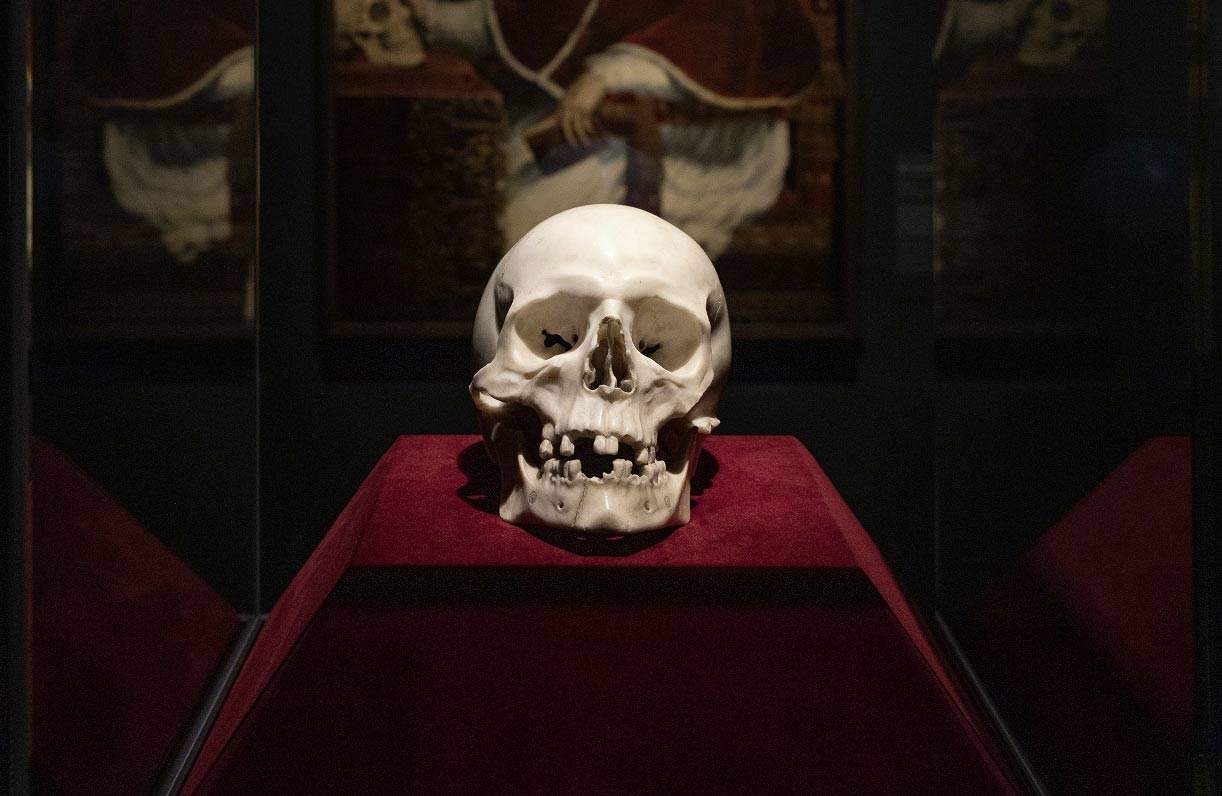Dresden, marble skull found that Bernini sculpted for Alexander VII
A marble skull found in the storerooms of state collections in Dresden, Germany, and on display since yesterday at the exhibition Bernini, der Papst und der Tod (“Bernini, the Pope and Death”) running until Sept. 5 at the German city’s Gemäldegalerie, has been attributed to Gian Lorenzo Bernini (Naples, 1598-Rome, 1680). The work, a life-size skull made of Carrara marble, “is carved so realistically that it could be mistaken for a real human skull,” say exhibition organizers. According to curator Claudia Kryza-Gersch, the author of the discovery, it is the skull commissioned from Bernini by Pope Alexander VII, born Fabio Chigi, soon after he ascended to the papal throne in 1655, so that every day, from his desk, he would be reminded of the transience of existence.
According to what we know, after Alexander VII’s death the skull remained in the family collections until 1728, when it was acquired for King Augustus II of Poland, who was also duke and prince-elector of Saxony. The third decade of the 18th century would thus be the time when the skull arrived in Dresden. Indeed, included among the works was “a celebrated Head of the Dead, the work of Cav[alie]r Bernini.” According to Kryza-Gersch’s research, the skull now on display in the Gemäldegalerie is precisely the “Dead Head” mentioned in the inventory of Augustus II. The skull also appears in a painting by Guido Ubaldo Abbatini (dated 1655/1656) that depicts Pope Alexander VII together with the skull.
To arrive at the discovery, Claudia Kryza-Gersch did extensive research in the Chigi inventories and those of the Dresden collections, as well as several other sources. The exhibition can also be visited with a special online tour that has been made available on the website of the Dresden Gemäldegalerie.
 |
| Bernini’s skull |
 |
| The portrait of Alexander VII executed by Guido Ubaldo Abbatini |
 |
| Dresden, marble skull found that Bernini sculpted for Alexander VII |
Warning: the translation into English of the original Italian article was created using automatic tools. We undertake to review all articles, but we do not guarantee the total absence of inaccuracies in the translation due to the program. You can find the original by clicking on the ITA button. If you find any mistake,please contact us.





























